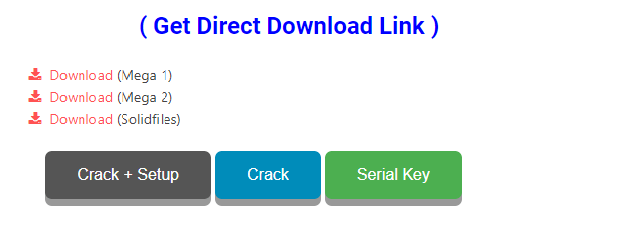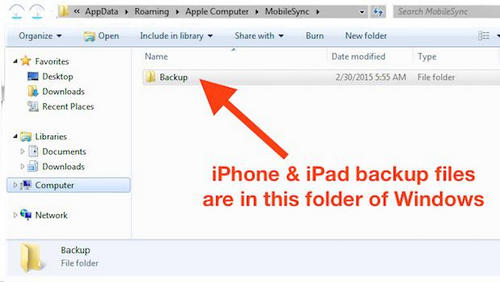What Operating System Does Apple Use

Apple installs updates through the System Preferences instead of in the Mac App Store. Both automatically recognize and install drivers for standard hardware peripherals such as mice, keyboards.
| Year | Event |
|---|---|
| 1978 | In June 1978, Apple introduced Apple DOS 3.1, the first operating system for the Apple computers. |
| 1984 | Apple introduced System 1 in 1984. |
| 1985 | Apple introduced System 2 in 1985. |
| 1986 | Apple introduced System 3 in 1986. |
| 1987 | Apple introduced System 4 in 1987. |
| 1988 | Apple introduced System 6 in 1988. |
| 1991 | Apple introduced System 7 operating system on May 13, 1991. |
| 1995 | Apple allows other computer companies to clone its computer by announcing its licensed the Macintosh operating system rights to Radius on January 4. |
| 1997 | Apple introduced macOS 8 in 1997. |
| 1997 | Apple buys NeXT Software Inc. for $400 million and acquires Steve Jobs, Apple co-founder, as a consultant. |
| 1999 | Apple introduced macOS 9 in 1999. |
| 1999 | Apple released macOS X Server 1.0 on March 16, 1999. |
| 2001 | Apple introduced macOS X 10.0, code-named Cheetah, and became available on March 24, 2001. |
| 2001 | Apple introduced macOS X 10.1, code-named Puma, and became available on September 25, 2001. |
| 2002 | Apple introduced macOS X 10.2, code-named Jaguar, and became available on August 23, 2002. |
| 2003 | Apple introduced macOS X 10.3, code-named Panther, on October 25, 2003. |
| 2004 | Apple introduced macOS X 10.4, code-named Tiger, at the WWDC on June 28, 2004. |
| 2007 | Apple introduced macOS X 10.5, code-named Leopard, on October 26, 2007. |
| 2008 | Apple introduced MobileMe at the WWDC on June 9, 2008. |
| 2009 | Apple introduced macOS X 10.6, code-named Snow Leopard, at the WWDC on June 8, 2009. |
| 2010 | Apple introduced macOS X 10.7, code-named Lion, at the 'Back to the Mac' event on October 20, 2010. The operating system was later released on July 20, 2011. New features included AirDrop, Gatekeeper, and many more. |
| 2012 | Apple released macOS X 10.8, code-named Mountain Lion, on July 25, 2012. |
| 2013 | Apple introduced macOS X 10.9, code-named Mavericks, at the WWDC on June 10, 2013. |
| 2014 | Apple introduced macOS X 10.10, code-named Yosemite, at the WWDC on June 2, 2014. |
| 2014 | Apple introduced Force Touch, a haptic feedback system for macOS. Simultaneously, they launch a similar feedback system for iOS called 3D Touch. |
| 2015 | Apple introduced macOS X 10.11, code-named El Capitan, at the WWDC on June 8, 2015. |
| 2016 | Apple introduced macOS X 10.12, code-named Sierra, at the WWDC on June 13, 2016. |
| 2017 | Apple introduced macOS X 10.13, code-named High Sierra, at the WWDC on June 5, 2017. |
| 2018 | Apple introduced macOS X 10.14, code-named Mojave, at the WWDC on June 4, 2018. |
| 2018 | Apple introduced Dark Mode in macOS X 10.14 (Mojave), a feature that turns the background to black and text to white. Dark Mode is easier on users' eyes at night, reducing eye strain. |
| 2019 | Apple introduced macOS X 10.15, code-named Catalina, at the WWDC on June 3, 2019. |
- The current Operating System on Apple computers is called OS X (was known as Mac OS X), as of today, 11/3/2012, it is version 10.8.2. Apple's computers are called Macintoshes, a name that is from.
- Apple recently announced the following updates in its operating systems and devices: Apple OS X El Capitan for Macs (available September 30) Apple iOS 9 for iPhone and iPad (available September 16) iPhone 6S and 6S Plus (available September 25) iPad Pro (available in November).
- Apple Watch OS (Apple Watch operating system): Apple Watch OS is the operating system designed specifically for the Apple Watch wearable device, with features that take advantage of the smaller screen and location of the device on the user's wrist.

MacOS Mojave: Apple’s New Operating System, in Detail
If you think macOS Mojave is just a design update, you are mistaken. MacOS Mojave takes only one hour to install. When you start the operating system for the first time, you don’t immediately see any obvious differences to its predecessor. At second glance, however, you can recognize numerous subtle new features, which are extremely helpful and designed to improve the user experience considerably.
For example, Apple has integrated the new Dark Mode, which supposedly ensures that users are no longer blinded by bright light (especially at night), which causes eyestrain and negatively impacts their overall experience. Apple’s Dark Mode is also very impressive when it comes to editing photos and videos; unfortunately, some apps are not yet compatible with it. The macOS Mojave dock is also adapted to Dark Mode and has a feature in System Preferences (also found in System Settings in iOS), which allows you to display last-used apps chronologically on the right side of the dock. Title editing software free. https://truegload767.weebly.com/remote-desktop-manager-mac-os.html. Unlike iOS, this area offers space for more than three apps.
Dynamic Backgrounds
Apple ii keyboard. MacOS Mojave also offers two new dynamic background images, which change considerably during the day and can be configured in System Preferences.
MacOS Mojave also offers two new dynamic background images, which change considerably during the day and can be configured in System Preferences. One of the backgrounds is represented by a dune in the Mojave Desert, while the other visualizes color during different times of day. Apple expects to soon make this feature available to third parties, so that they can also provide outstanding background images for macOS Mojave.
More Desktop Order
Apple has integrated a new stacking feature into this version of macOS, designed to make desktop disorder a thing of the past.
Apple has integrated a new stacking feature into this version of macOS, designed to make desktop disorder a thing of the past. When this function is enabled, it neatly sorts desktop files into stacks, that can be categorized by a variety of features. The contents of a specific batch can then be unfolded and viewed. This function still needs improvement, and there are already some apps (such as Hazel), which can do this job more efficiently.
Screenshots
Apple has also changed the function of the screenshot screen slightly and adapted it from iOS. At the bottom right of the screen on the macOS Mojave desktop, you can now see a small thumbnail, where you can make changes after doing a screenshot. However, if this thumbnail version is not clicked, it eventually disappears. The operating system now also includes a delayed recording function, with the option to show or hide the mouse pointer. What worthwhile anna robertson brown pdf.
The New App Store
The macOS Mojave’s App Store has also been updated and adapted from the newly redesigned one on iOS.
The macOS Mojave’s App Store has also been updated and adapted from the newly redesigned one on iOS. Now more editorial content is available and is divided into more sections, and the operating system update functions can be found in System Preferences.
New Safari Features
Safari has also received several updates with macOS Mojave, including the addition of favicons to the tabs. This allows flawless navigation, even if several tabs are open simultaneously. Secure passwords can now be both generated and managed, like checking them for duplicates and changing them if necessary. Also included is “Intelligent Tracking Protection,” which makes it more difficult for website providers to track you across multiple homepages, and automatically deactivates sharing buttons of various social networks. If you want to use this function, you have to explicitly agree to the data transfer.
More MacOS Mojave Updates
With the Home app, you can control your HomeKit-enabled accessories from the comfort of your Mac.
Office 365 para macbook air. One important update, available for the first time, is the Home app for the desktop, which gives Siri the ability to control smart homes via HomeKit.
MacOS Mojave will be the last operating system to support 32-bit applications. Starting in Autumn 2019 (when the next version of the operating system will probably be released), all apps must be 64-bit compatible.
Conclusion
Apple’s macOS Mojave is an excellent update of the Mac operating system. Though it brings no sweeping innovations, it demonstrates fine-tuning of numerous smaller features, and provides a meaningful, advanced, and user-friendly update that significantly improves the user experience. Bottom line: Apple’s macOS Mojave is a great operating system!
Links
- macOS Mojave – Apple
- Upgrade to macOS Mojave – Official Apple Support
- Everything About Apple’s Products – The complete guide to all Apple consumer electronic products, including technical specifications, identifiers and other valuable information.
- Sell your old Macbook for top price on the online market – iGotOffer
What Operating System Does Apple User
macOS Mojave: Top Features and Changes! [Video]
What Operating System Does Apple Use Instead
Video uploaded by 9to5Mac on September 24, 2018

What Operating System Does Apple Use
UNDER MAINTENANCE
